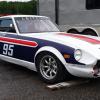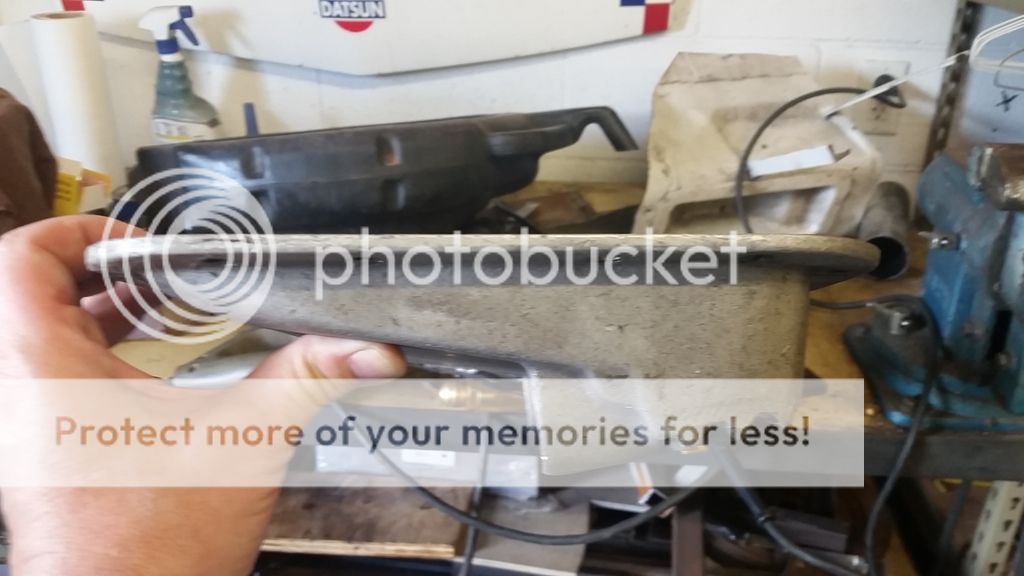-
Posts
853 -
Joined
-
Last visited
-
Days Won
35
Content Type
Profiles
Forums
Blogs
Events
Gallery
Downloads
Store
Posts posted by clarkspeed
-
-
I would say my observations are a little different. All of the OEM gas turbine manufacturers have significant Chinese content. Things have changed drastically there in the last 10 years. For the most part, materials, processes, and quality are on par with anyone else in the world, but you have to commit considerable resources to get it. Well defined specs are necessary. And companies like GE assign their engineers to stay there and work the technical problems. Like anywhere, there are good companies and bad ones, and definetly more risk of IP and trade secret loss. The suppliers I manage there are very impressive to say the least. BTW you can buy stuff from India for about 1/2 the price of China. But that is another story.....
-
"Made in China" is in no way a label for crap. You would be amazed at what OEM manufacturers export from China whith the highest grades of alloys and precision manufacturing capability. It's all in the specifications and what quality you desire. On the other hand, if the part was not designed by a reputable company with robust quality control, then you may well be buying crap no matter what the country of origin is. And yes, you usually get what you pay for.
-
Little tip. I installed a pair of tie down rings in the outer nutplates just behind the seats. You can easily reach under the car blind and hook on tie down straps in the trailer and allows the rear straps to run parallel.
-
-
No substitute for cubic inches!
-
Curious why you would be selling those.
-
Interesting. Is that Mustang II based?
-
Tragic indeed. Did not know John personally, but I can attest he was one of the few truly knowledgeable, helpful, and insightful contributors to this forum. Not many people "get it", but John did. A great great loss for the Hybrid community. I took for granted that his response was always there, with just a few hours delay, for so many years.
-
Good 2 know
-
Wish they would do some 3.3, 3.1, and 4.3 R&P sets
-
I tried to lower the best I could on the car I am building now. I used a different steering rack mounted slightly lower and dropped the engine until there was less than 1/4 inch clearance to oil pan. I dont think I gained much. I also moved the engine about 1" to passenger side for weight distribution.
-
That is interesting. Have any pictures of your pan?
-
I finally got around to dragging it down. It may have less clearance than a stock pan! The "sump" is a 4"wide tray that runs the length of the pan on the drivers side. It measures about 3" from block to lowest point.

-
Derek, I definetly see a Bill Coffey garage party award in your future.

-
I have an ARE pan on the shelf. I could take some measurements if you want.
-
Bilsteins are bulletproof. I can't blow them, and even if I did Bilstein will rebuild for $80 and valve any way I want.
-
Bacically everything in suspension is compromice, some solutions are better than others, but not necessarily all ways. Are we talking about strut suspension. If so, within "normal" SAI-angles can be used angles somewhat zero and up. Or down, if you think about control arm. Remember measure angles by pivot points.
Widening track affects weight tranfers, and by that spring load and wheel rate depending suspension type. Widening both ends same amount is a safe way. If you not sure what you are doing.
Could not have said it better myself. Everything is a compromise. Especially with a strut suspension. You can really get wrapped around the axle looking for some perfection that is not there. And everything you change has at least a primary and secondary effect. So think about that when you start turning screws on those trick adjustable parts and drilling cross-members.
But with that said, I don't think there are any negatives to getting rid of bump steer......
-
I think every rebuild I have done myself cost $1400-1500 in parts and machine shop. For budget, I say keep it stock and invest in intake and exhaust as required. A little "free" power can be had by port matching manifolds and blending the port into the valve seats on some heads.
-
From my experience, large movement of the inner pivot makes the bump steer unmanagable. I prefer controlling the RC and camber by other methods. Then bumpsteer can be mostly eliminated with a very small vertical slot in the cross member of 1/4" or less.
-
Those TTT control arms look just like the set I recently fabricated. I got the monoballs and pins from UB Machine.
My theory on bump steer is I dont worry about measuring it.....just try to get it as close to 0 as possible. No expensive tool needed. Just 2 pcs of plywood, piano hinge, 2 small screws that extend out to touch rim, and a weight to hold on ground firm. Remove spring and jack car through range of motion. Adjust until screws ride on wheel rim throughout range.
-
Bumpstops and packers - the secret sauce for Chumpcar racing.

-
Look up the stud kit number on ARP website. It links to their correct torque spec.
Not unusual for older block to have some corrosion in the threads if water ever set in there.
-
I agree with stiffer spring rates. At 150mph my 425# front feels real mushy. Which also means you better not have any bump steer. In general, F&R toe in adds stability and doesnt scrub that much speed off.
-
I watched it a couple months ago. I only began following racing closely after he was past his "prime" so I didnt realize what a good driver he really was. Nor did I know he raced full 10-13 race seasons with testing in between.
I tried to talk to him on the grid at Daytona one year when he was 60 or something. Thought he was a A-hole. But after seeing the movie, I realize how much fan/media attention he had to deal with. He actually ran over a photographer at Lemans.
Adam Carolla did the movie. Great footage and interviews with Bob Sharpe.



Custom LD28 Crankshafts
in Nissan L6 Forum
Posted
Oh and the original subject, if Scat or Callies, or other reputable supplier put their name on it and stand behind the quality, then made in China is no big deal, maybe even better. But I don't think I would buy anything off Ali Baba with unknown quality standards.